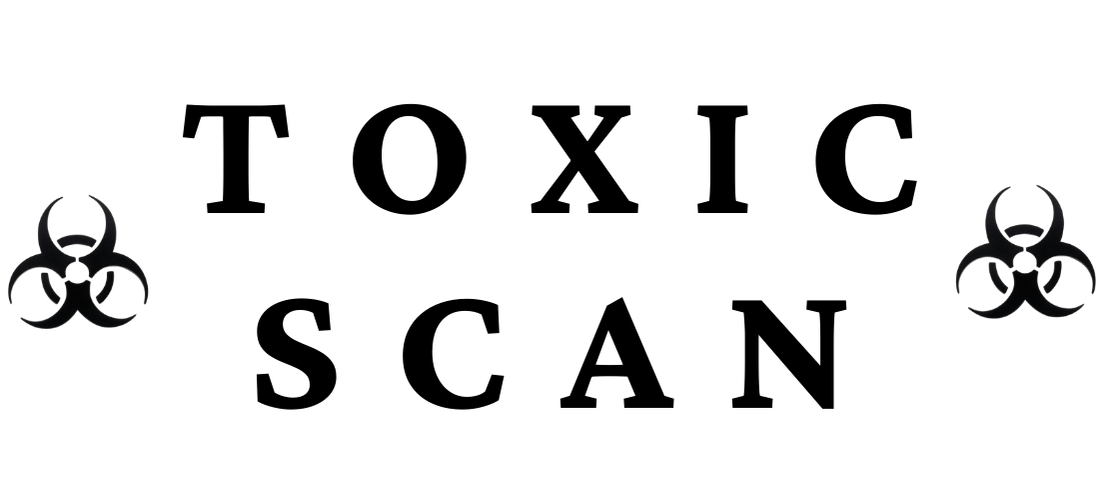Microplastics in Drinking Water: What You Need to Know

Microplastics in Drinking Water: What You Need to Know
Clean drinking water is fundamental to human health, yet a growing body of research reveals a concerning reality: microplastics have infiltrated our water supplies worldwide. These tiny plastic particles, often invisible to the naked eye, have been detected in tap water, bottled water, and even in remote mountain springs once thought to be pristine.
As our understanding of microplastics continues to evolve, consumers are increasingly questioning what these particles mean for their health and how they can reduce their exposure. This guide provides an evidence-based overview of microplastics in drinking water and practical strategies for minimizing your consumption.
What Are Microplastics?
Microplastics are tiny plastic fragments measuring less than 5 millimeters (about the size of a sesame seed) in length. They are categorized into two main types:
-
Primary microplastics: Manufactured at microscopic size for specific purposes, such as microbeads in personal care products or pellets used in manufacturing.
-
Secondary microplastics: Resulting from the breakdown of larger plastic items through environmental processes like UV exposure, wave action, and mechanical abrasion.
What makes microplastics particularly concerning is their persistence. Plastics don't biodegrade; they simply break down into ever-smaller particles, eventually becoming nanoplastics (particles smaller than 1 micrometer), which are even more difficult to detect and filter.
How Microplastics Enter Our Drinking Water
Microplastics infiltrate our water systems through multiple pathways:
Environmental Sources
- Surface water contamination: Plastic litter in rivers, lakes, and oceans breaks down into microplastics that enter water sources.
- Agricultural runoff: Plastic mulch and other agricultural plastics degrade and can be carried into waterways.
- Atmospheric deposition: Airborne microplastic particles can settle into surface water.
Infrastructure Sources
- Water treatment plants: Traditional water treatment isn't designed to remove microplastics completely.
- Piping systems: Plastic pipes can degrade and release particles into water as it travels to your tap.
- Bottling facilities: Plastic particles can be introduced during the bottling process for packaged water.
Household Sources
- Plastic containers: Storage of water in plastic containers can lead to plastic leaching, especially if the containers are older or exposed to heat.
- Domestic filtration systems: Some poorly maintained filters can actually release plastic particles into water.
The Current State of Microplastics in Drinking Water
Research on microplastics in drinking water has revealed some alarming findings:
- A 2018 study by Orb Media found that 94% of tap water samples in the United States contained microplastic fibers.
- The World Health Organization's 2019 analysis confirmed the widespread presence of microplastics in both tap and bottled water globally.
- A study published in Environmental Science & Technology Letters found that bottled water contained on average 325 microplastic particles per liter, with some samples containing over 10,000 particles per liter.
Despite these findings, most regulatory agencies have not yet established legal limits for microplastic content in drinking water, partly due to the evolving nature of detection methods and uncertain health impacts.
Potential Health Concerns
The science regarding health impacts of ingesting microplastics is still developing, but several concerns have been identified:
Physical Risks
- Tissue accumulation: Smaller microplastics and nanoplastics may potentially cross into tissues after ingestion.
- Inflammatory responses: Some studies suggest microplastics can trigger inflammation in digestive tissues.
Chemical Risks
- Additive leaching: Plastics contain various chemical additives (plasticizers, stabilizers, flame retardants) that can leach out in the body.
- Contaminant absorption: Microplastics can absorb environmental pollutants like pesticides and heavy metals, potentially delivering these toxins into the body.
Microbial Risks
- Biofilm formation: Microplastics can develop biofilms that harbor potentially harmful bacteria.
It's important to note that while these concerns exist, the direct human health impacts from microplastics in drinking water remain unclear at current exposure levels. Research is ongoing, with scientists working to establish better assessment methods and clearer connections between exposure and health outcomes.
How to Reduce Microplastics in Your Drinking Water
While completely eliminating microplastic exposure may not be possible in today's plastic-dependent world, several strategies can significantly reduce the amount in your drinking water:
Filtration Solutions
Different filtration technologies vary in their effectiveness at removing microplastics:
-
Reverse Osmosis Systems
- Effectiveness: Excellent (can remove particles as small as 0.001 micrometers)
- Pros: Removes many other contaminants as well
- Cons: Relatively expensive, wastes some water, removes beneficial minerals
-
Activated Carbon Filters
- Effectiveness: Good for larger microplastics
- Pros: Affordable, improves taste, removes some other contaminants
- Cons: Less effective for very small particles
- Examples: Many pitcher filters and faucet-mounted filters use this technology
-
Ceramic Filters
- Effectiveness: Very good for microplastics larger than 0.5 micrometers
- Pros: Long-lasting, can be cleaned and reused
- Cons: Slower filtration rate
-
Ultrafiltration Systems
- Effectiveness: Very good (can remove particles as small as 0.01 micrometers)
- Pros: No electricity required, retains beneficial minerals
- Cons: May require professional installation
Water Container Choices
Your choice of container for storing and drinking water can also impact microplastic exposure:
-
Glass Containers
- Best option for storing water with minimal plastic exposure
- Durable and doesn't leach chemicals
- Heavier and breakable
-
Stainless Steel
- Excellent alternative to plastic
- Durable and portable
- Some may impart a slight metallic taste
-
Plastic Containers (if necessary)
- Choose BPA-free options labeled with recycling codes #2, #4, or #5
- Avoid exposing plastic containers to heat (dishwashers, hot cars, microwaves)
- Replace plastic containers when they show signs of wear or damage
Water Source Considerations
The source of your water can significantly impact its microplastic content:
-
Tap Water vs. Bottled Water
- Despite common perception, studies have shown bottled water often contains more microplastics than tap water
- Bottled water also contributes to the overall plastic pollution problem
- If taste is a concern with tap water, consider a filter rather than bottled alternatives
-
Well Water
- Private wells may have less microplastic contamination depending on local conditions
- Regular testing is recommended to ensure general water quality
-
Spring Water
- Natural springs may have lower microplastic levels, but bottled spring water still passes through plastic-containing infrastructure
- Direct collection from springs, where legal and safe, may offer lower exposure
Creating a Comprehensive Strategy
For those concerned about microplastics in drinking water, a multi-faceted approach offers the best protection:
Immediate Actions
- Install an appropriate water filter based on your budget and specific concerns 2. Switch to glass or stainless steel containers for water storage 3. Run tap water for a few seconds before collection to flush out water that has been sitting in pipes 4. Regularly maintain any water filtration systems according to manufacturer guidelines
Long-term Changes
- Reduce overall plastic use to help address the root cause of microplastic pollution 2. Support policies that address plastic pollution and improve water quality standards 3. Stay informed about emerging research on microplastics and water quality
Special Considerations for Vulnerable Groups
Certain populations may want to take extra precautions regarding microplastic exposure:
Infants and Young Children
Children consume more water relative to their body weight and are in critical developmental stages:
- Use filtered water for formula preparation
- Ensure sippy cups and children's water bottles are made from safer materials like stainless steel
Pregnant Women
During pregnancy, protecting both maternal and fetal health is important:
- Consider using higher-grade filtration during pregnancy
- Avoid storing water in plastic containers, especially in warm environments
The Broader Environmental Context
While personal actions can reduce individual exposure to microplastics, addressing the larger environmental issue requires systemic change:
- Reduced plastic production and consumption: The ultimate solution to microplastic pollution
- Improved waste management: Better recycling and disposal systems to prevent plastics from entering waterways
- Advanced water treatment: Development of technologies that can effectively remove microplastics from municipal water supplies
- Research and monitoring: Continued scientific investigation to better understand the scope and impact of microplastics
Conclusion
The presence of microplastics in our drinking water represents an emerging challenge that sits at the intersection of environmental pollution and public health. While the full health implications remain under investigation, taking reasonable precautions to reduce exposure is a prudent approach.
By implementing appropriate filtration methods, making wise choices about water containers, and supporting broader environmental solutions, you can significantly reduce your exposure to microplastics while contributing to the larger effort to address plastic pollution.
As scientific understanding evolves, stay informed through reputable sources and be prepared to adjust your approach based on new findings and recommendations from public health authorities.
References
- World Health Organization. (2023). "Microplastics in Drinking-water." WHO. https://www.who.int/publications/i/item/9789241516198 2. Mason, S.A., Welch, V.G., & Neratko, J. (2022). "Synthetic Polymer Contamination in Bottled Water." Frontiers in Chemistry, 6(407), 1-11.
- Pivokonsky, M., Cermakova, L., Novotna, K., et al. (2023). "Occurrence of microplastics in raw and treated drinking water." Science of The Total Environment, 643, 1644-1651.
- SimpleLab Tap Score. (2024). "Microplastics Guide." SimpleLab. https://mytapscore.com/blogs/tips-for-taps/are-microplastics-in-my-drinking-water 5. Hazen and Sawyer. (2023). "Microplastics in Water and Wastewater." Hazen and Sawyer. https://www.hazenandsawyer.com/horizons/microplastics-in-water-and-wastewater 6. BBC Future. (2024). "Reducing Microplastics Exposure." BBC. https://www.bbc.com/future/article/20240110-microplastics-are-everywhere-is-it-possible-to-reduce-our-exposure 7. Koelmans, A.A., Mohamed Nor, N.H., Hermsen, E., et al. (2022). "Microplastics in freshwaters and drinking water: Critical review and assessment of data quality." Water Research, 155, 410-422.
